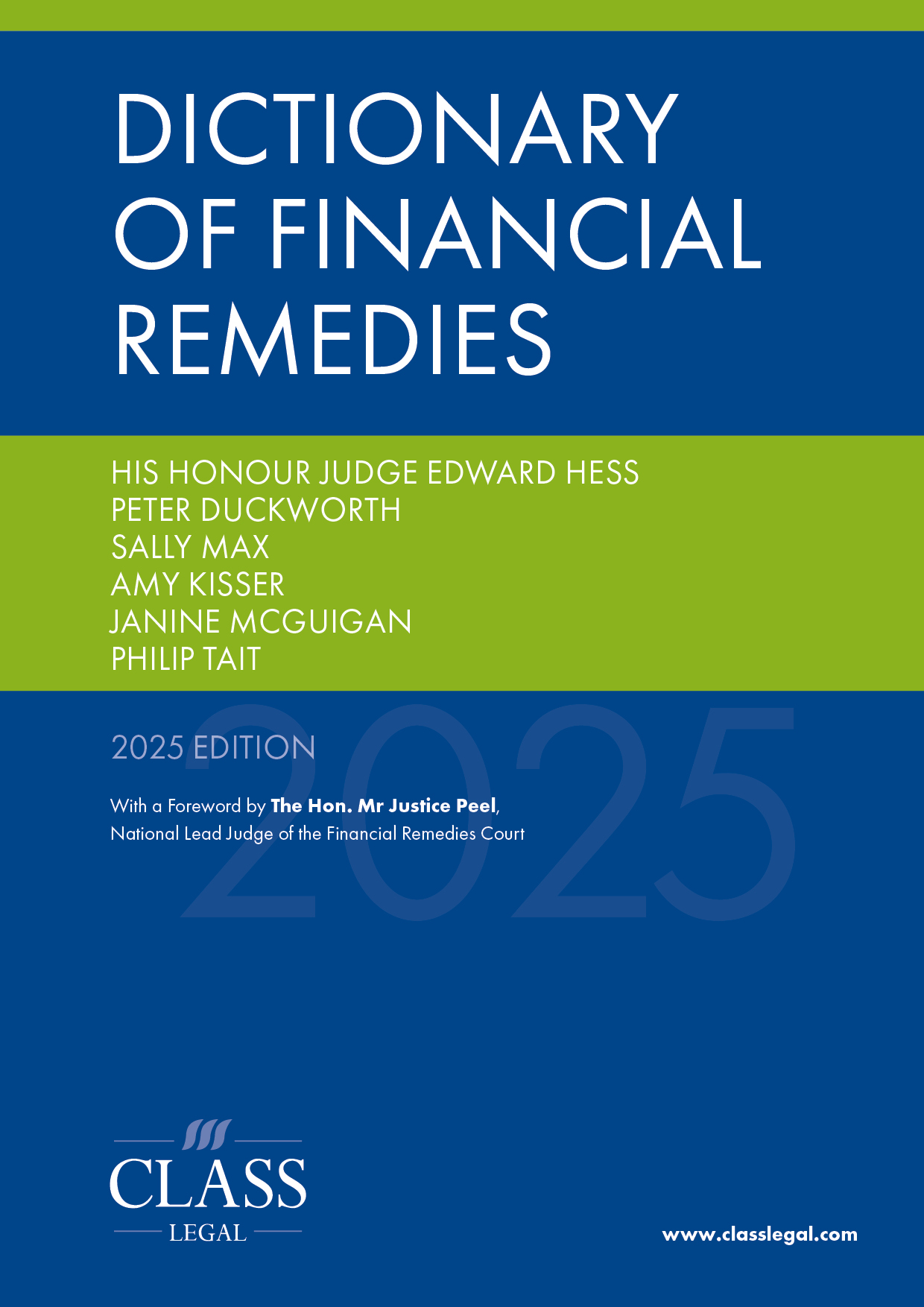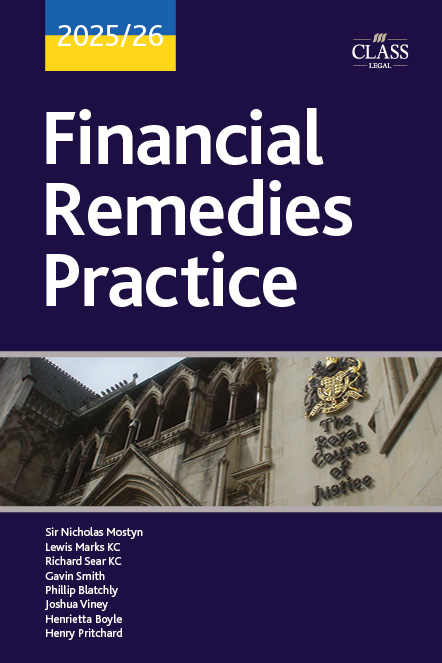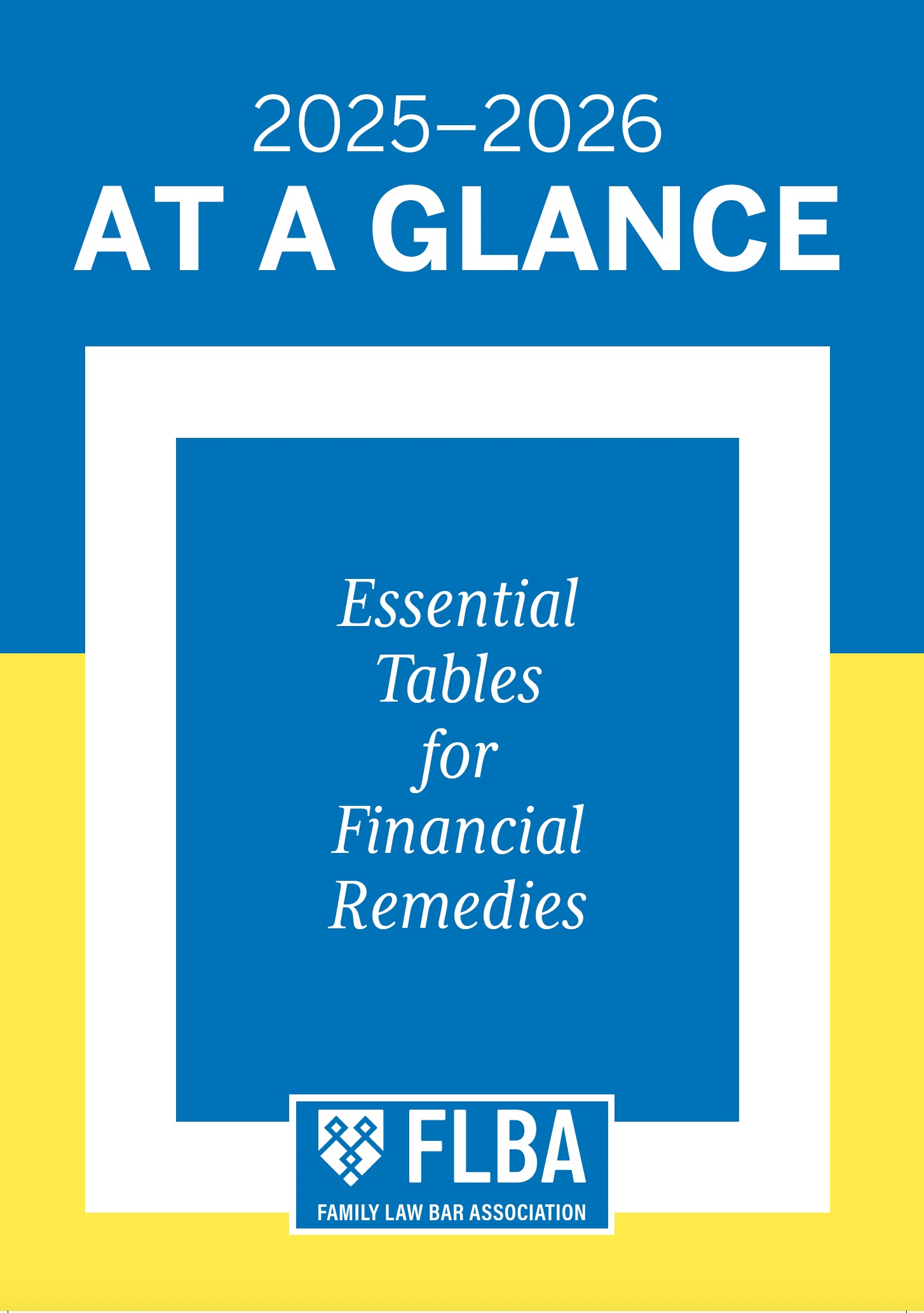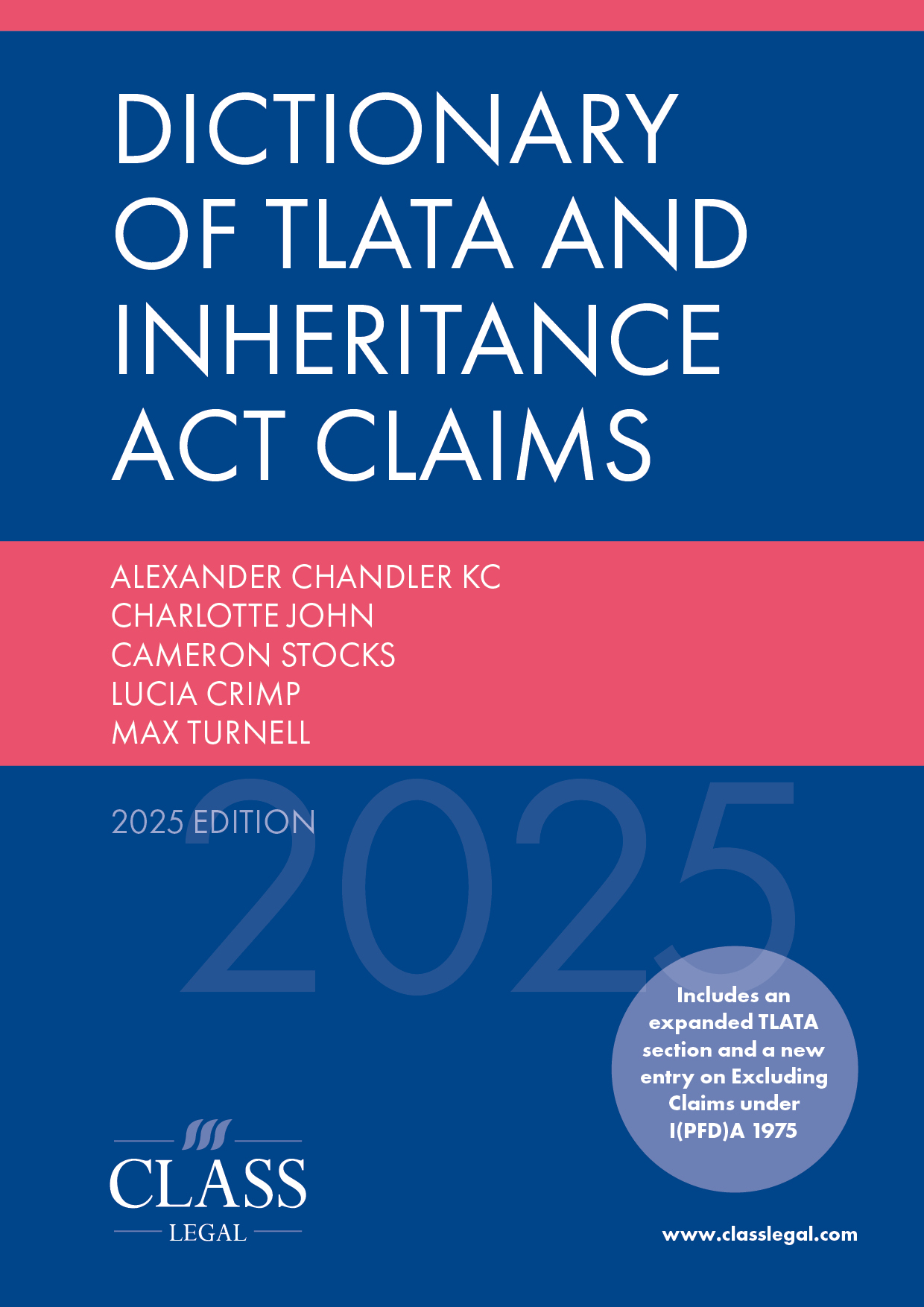
The Express Financial Remedy Pilot – a Fast Track to Success or Turmoil?
Published: 25/04/2025 14:00

A fast-track pilot scheme for financial remedy cases is running from 7 April 2025 to 3 April 2026 in courts in the north of England. It applies by default to all cases started there where net assets (excluding pensions) are less than £250,000. It is possible to request to be removed from the express pilot and it will be interesting to follow the numbers of cases where that is granted.
A very short outline, addressed directly to the parties, is here.
All the formal changes come through Practice Direction 36ZH, which amends rule 9 of the Family Procedure Rules, set out here.
Are there any predictions that can be made as to whether this will be a success, or any risk factors that may cause there to be difficulties, or even turmoil?
Is it even right to pitch this pilot at the lower end of the asset range? These cases can be the most difficult to get right, with the stakes being much higher.
Court timetable
Within a week after issue, the parties are given a tight timetable of actions to progress to meet the deadline of holding the first hearing within 16–20 weeks of issue. (See table below for details.)
The first main difference in this fast-track procedure is that there is the presumption that the first hearings are to be used as FDRs, unless there is good reason for not doing so. Secondly, questionnaires have to be answered, mortgage capacity reports obtained, and any other expert evidence produced and probed all before the parties make their first appearance in front of a judge.
All this must be done at speed too. Given that one week is lost between issue and the timetable being sent out (with all times starting from issue), the unwitting respondent, in particular, only has between 15 to 19 weeks, depending on when the FDR is scheduled, to pull this all together. The applicant may be raring to go, but the respondent may take a week or two just to find and instruct a solicitor, if they are to be represented.
If all goes well at FDR, the final hearing is to be ‘not less than’ 10 weeks afterwards, with a time estimate of one day. This seems quite a manageable time frame, though as we all know, the ‘not less than’ could end up being a ‘considerably more than’ timeline.
Parties who instruct solicitors
Anything that speeds up and simplifies a pathway to sensible resolution is to be welcome. It is hoped that the pilot is likely to work well and as intended in straightforward cases and where both parties are represented by solicitors who have the capacity to deal with matters at speed.
It is the solicitors who, ironically, are also more likely to be able to help their clients navigate the process of being granted permission to revert to the standard procedure. The factors that count are the existence of complex asset or income structures, any other potentially complex issues, or other circumstances that mean that it will not be possible to use the first hearing as an FDR, or where a case is likely to require a final hearing lasting more than a day.
Another irony is that whilst this may work well with two sets of speedy solicitors on board, those are surely also the cases where the First Appointment is also combined with an FDR under the standard process anyway.
Third party involvement
It’s not just the instructed solicitors that have to be speedy. Any instructed expert has to keep to very tight timescales too. They are being asked to produce a report that comes just four weeks after questionnaires are exchanged, which itself must take place two weeks after exchange of Form E. That 4–6 week timescale also includes the time it will take to find an expert and agree a joint letter of instruction, as well as research and complete a report. This seems a very tall order.
The parties can do a property valuation between them, by the tried and tested method of getting a range of three Estate Agents estimates and taking the average. Otherwise there are three possible types of experts who could be involved:
- a single joint expert (SJE) to provide a property valuation, if the parties do not go down the Estate Agent route;
- an SJE for other assets;
- a financial advisor to produce a mortgage capacity statement.
Surely nothing can be done to ensure that the experts comply with such a tight timescale. This alone would be a reason not to have the first hearing as an FDR under the ‘other circumstances’ head.
What about the mortgage companies: there is no reference in the pilot rules to service of the application on them.
The problem of unrepresented parties
By pitching this pilot at those with the lowest value assets, it is likely that at least one of the parties will be unrepresented, or both.
The question then is whether the unrepresented parties in this cohort should be the ‘guinea pigs’ in having to miss out on the curating role of a First Appointment. They are the parties most likely to be in need of it.
One wonders how many will apply for the first hearing not to be a FDR, based on the ‘other circumstances’ clause. As with the experts, this is likely to be based around a general lack of readiness.
It requires a certain amount of foresight to make that application. The alternative is that they show up to an FDR muddled and not having completed many of the pre-hearing requirements. That listed FDR hearing may then just revert back to being a First Appointment in all but name only and so the process begins to look like the standard procedure anyway.
Is the pilot process too great an ask for the unrepresented?
A concern for this unrepresented cohort in financial remedy cases is not new. Some of the hardest hit under LASPO were women of modest assets/equity who were unable to afford lawyers yet were in desperate need of being separated from their spouse (though perhaps with insufficient domestic abuse grounds to get legal aid or just above the limits). Tackling a financial case can be so much harder, more detailed and more process-driven than advocating to spend time with children. Nothing has changed there, we live with the disaster that was LASPO, but this adds more layers again.
District Judges may find that first appointments even under the standard process are an exercise in having to steer the unrepresented parties in how to get their disclosure and questionnaires in order. So what will happen when the norm under the pilot is to skip this step and go (at speed) straight to the FDR?
I suspect there are several possible consequences:
- The parties will be unprepared due to the speed. Not only are the existing measures tough enough when unrepresented, such as completing Forms E, including getting pension and home valuations, plus drafting questionnaires, but they have to do so within a much tighter timescale.
- The parties will be unprepared due to the extra demands upon them, both in terms of answering questionnaires and obtaining further evidence and reports.
- The parties will be unprepared due to their inability to communicate and co-operate with one another. They are told to ‘use best endeavours to agree mortgage capacity and valuations’.
If they cannot do so, they must jointly obtain three market appraisals and take the average or instruct a joint expert to provide a valuation.
How realistic is all of this? The need to seek agreement and take steps jointly seems counter to what we now know about coercive and controlling behaviour (CCB) in the realm of economic and financial abuse in particular.
- Given the speed and the pressure to settle at the first visit to court, the potential for one person’s CCB to drive through an unfair outcome is greater. This is because the other party might not feel able to question the lack of full disclosure before the FDR, so that the judge will hear their finances being presented as a comprehensive picture by the more powerful party. The weaker party would then have even more of an uphill struggle pushing back on a judicial indication, which is unknowingly based on incomplete and inadequate disclosure.
- Since parties are expected to answer the questionnaires before their first appointment, some issues are bound to be lost or be set out in chaotic, incomplete or unfocused replies.
- The lower value cases are the hardest by far. No-one sharing out the millions will be made homeless and normally each can pay for lawyers to probe disclosure and advocate their case. These pilot families will probably have scrimped and saved to be able to keep just the one family home afloat. They probably cannot afford to run two homes, so some level of objective hardship is baked into any outcome. Speed may therefore not be of the essence for this cohort, as it may come at the expense of proper justice and full consideration of the harsh choices and consequences.
What about med-FastTrack?
A mediator’s existing role is to work with participants who may be navigating their finances alone or with minimal legal involvement. This pilot requires so much front-loaded work in the out-of-court space, that it is very aligned with the work done in mediation already. Especially with unrepresented participants, there is a lot of ‘curating’ mediators do during the process of identifying and providing the full and frank disclosure.
So, given that there is still public funding for mediation and only one professional fee is required for two parties if not, could not mediation step into this breach?
Perhaps this is only an extension of what judges should be doing under the new Part 3 provisions anyway. However, in order to assist in the good pre-court management of their affairs, there could be a rebuttable presumption that the couples attend mediation for this purpose. Of course, they could settle in mediation and so come off the pilot altogether, or they could feedback at FDR and continue in mediation for any remaining issues.
This also helps with the (arguably) unrealistic expectation that a couple will work together to seek agreement on asset valuations and to instruct experts jointly if not. Mediation can take place in the shuttle format if the issue of domestic abuse is raised, or other hindrances to direct communication.
The mediator can work with the unpresented couple to help them prepare for the speedy run through to an FDR. The participants will see what issues are important and the mediator can identify the relevant factors for them and the ones that need an adjudication. This will assist the judge, as the parties will be able to express their case more correctly and concisely, rather than focusing on matters that may have more personal than legal relevance. After a judge makes an indication, the parties could return again to mediation as the clock ticks down to the final hearing, to see if they can settle at that stage. Some mediators also incorporate creating the first draft of a financial consent order into their without prejudice outcome documents.
Couples with modest incomes and a jointly owned home are likely to be eligible for legal aid, as this covers net capital of under £416,000. A sole homeowner with net equity under £208,000 is likely to be within scope too. So, there is a strong possibility that the limit on capital for the pilot will mean that many parties are in the scope of legal aid eligibility on capital too. If just one person is eligible, the other will have their MIAM and first mediation meeting covered too. The detailed calculations for capital are complicated and if a person owns any other assets other than their home (other than pensions) this is likely to make them ineligible. Parties also have to be eligible on income grounds, but that covers (for the moment at least) all the millions of Universal Credit claimants, whether they work as well or not.
The mediation voucher is also available if, as part of their creating two separate homes, the couple need to sort out arrangements for the children too.
Conclusion
The stated purpose of the pilot scheme is to ‘assess the use of new practices and procedures … with a view to further enhancing efficiency in the disposal of financial remedy cases’.
The intention behind the pilot is therefore a very laudable one. Too many cases drag on causing tension and costs to rise. If it is indeed a simplified process, with no detriment for being more streamlined, that is to be welcomed.
Nevertheless, there is a real risk that the unrepresented parties in particular will be unable to carry out the ambitious court timetable of tasks that need completion prior to the FDR, with no First Appointment to assist them.
Mediation could however be of enormous help to bridge that gap.
| Time after issue (weeks) | Action | Time before FDR, assuming 16 weeks from issue (weeks) |
| By week 1 | 7 days after issue the court (or the applicant if chosen) will serve a copy of the application on the respondent and give notice of the date of the first hearing and final hearing to both parties | |
| Fix a first hearing date not less than 16 weeks and not more than 20 weeks after the date of issue (with a time estimate of not less than an hour). | ||
| Fix a final hearing date not less than 26 weeks and not more than 30 weeks after the date of issue with a time estimate of a day. | ||
| By week 4 | Not more than 28 days after the date of the issue both parties must file and simultaneously exchange Form Es | 12 weeks before FDR |
| By week 5 | If either party wants to revert to the standard procedure, they must apply by filing and serving an application ‘generally no later than’ 7 days from the date of Exchange of Form Es. This is presumably always just a paper application. | 11 weeks before FDR. |
| The court to consider an application to leave the pilot ‘where possible before the first hearing’. | ||
| By week 6 | Not more than 14 days after Form E exchange the parties must use their best endeavours to agree the property and other valuations | 10 weeks before FDR |
| By week 6 | Not more than 14 days after Form E exchange the parties must use their best endeavours to agree mortgage capacities | 10 weeks before FDR |
| By week 6 | Not more than 14 days after Form E exchange the parties must file and serve questionnaires limited to 4 pages (or a statement that no further information is required) | 10 weeks before FDR |
| No time mentioned to instruct, but report must be provided by week 10 | Where parties are unable to agree valuations, they must: (a) for property, jointly obtain 3 market appraisals and take the average, or instruct a single joint expert to provide a valuation; (b) for other assets, instruct a single joint expert to prepare a report | |
| No time mentioned to instruct, but must be provided by week 10 | Where parties are unable to agree mortgage capacities, they must obtain a mortgage capacity statement from a financial advisor specifying: maximum mortgage raising capacity; details of the terms of a suitable mortgage; monthly cost of the mortgage; and information on which the above is based. | |
| By week 10 | Any expert report must be filed no more than 28 days after receipt of the questionnaires | 6 weeks before FDR |
| By week 10 | Replies to questionnaire are to be filed and served no more than 28 days following receipt of the questionnaire | 6 weeks before FDR |
| By week 10 | No more than 3 sets of property particulars in support of the likely housing needs to be filed and served no more than 28 days following receipt of the questionnaire | 6 weeks before FDR |
| By week 12 | Any written questions must be put to experts within 7 days of the report being served | |
| By week 13 | Replies must be provided by experts within 7 days of the questions being received. | |
| By week 13 | Not less than 21 days before the first hearing, each party must file with the court and serve on the other party a statement setting out their proposals for settlement. | 3 weeks before FDR |
| By week 14 | Not less than 14 days before the first hearing, the parties must prepare a schedule setting out those issues on which they disagree | 2 weeks before FDR |
| By week 15 | Not less than 7 days before the first hearing, the parties must file: (a) a composite case summary using the Case Summary Template ES1; (b) a composite schedule of assets and income using the Template ES2; and (c) a composite chronology | 1 week before FDR |
| Parties must simultaneously exchange, or file open offers not later than 7 days after the first hearing. |









